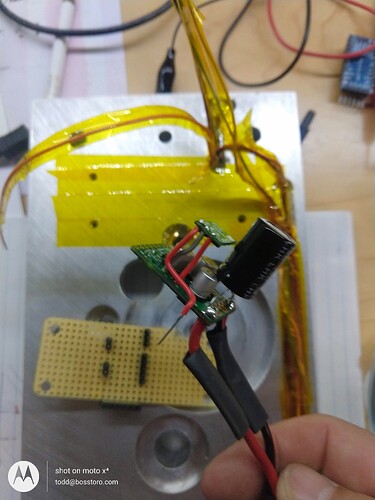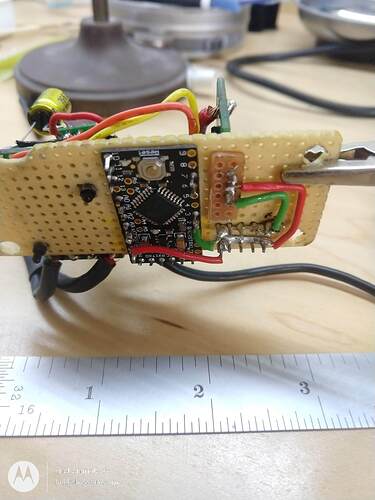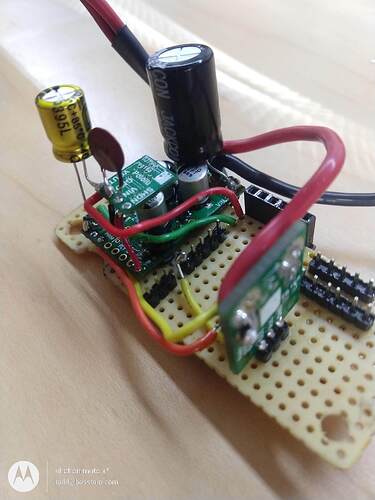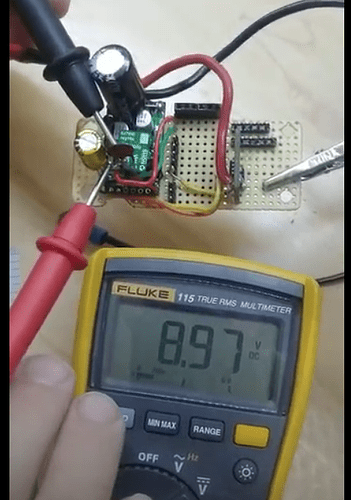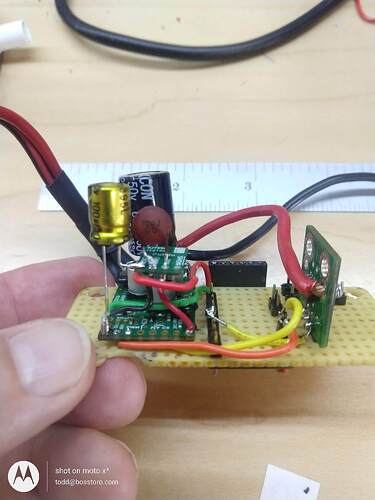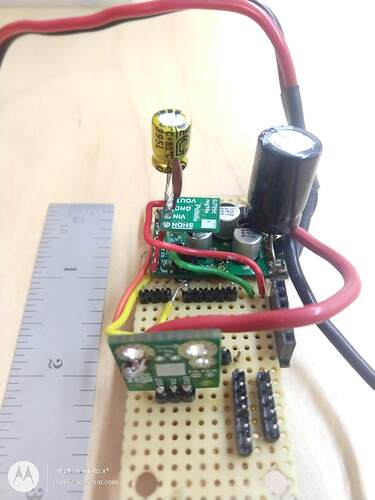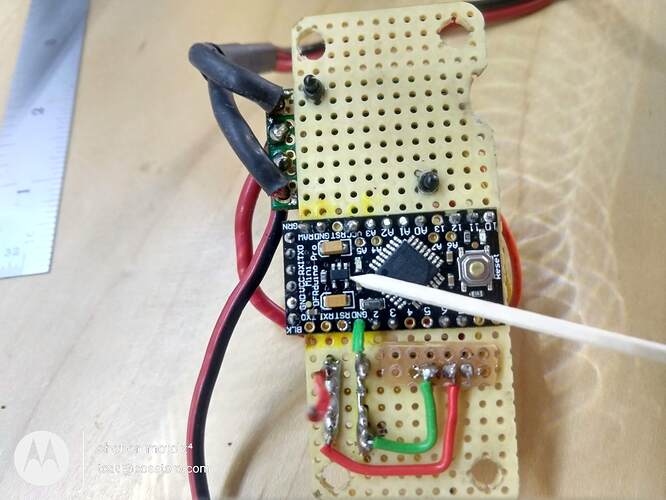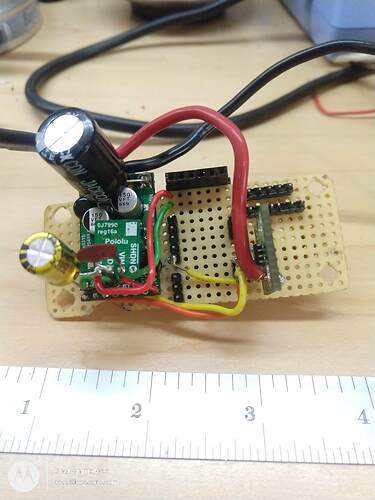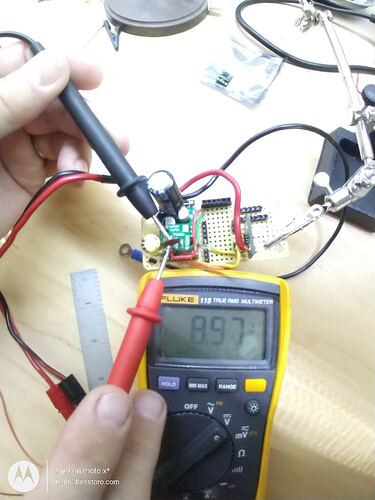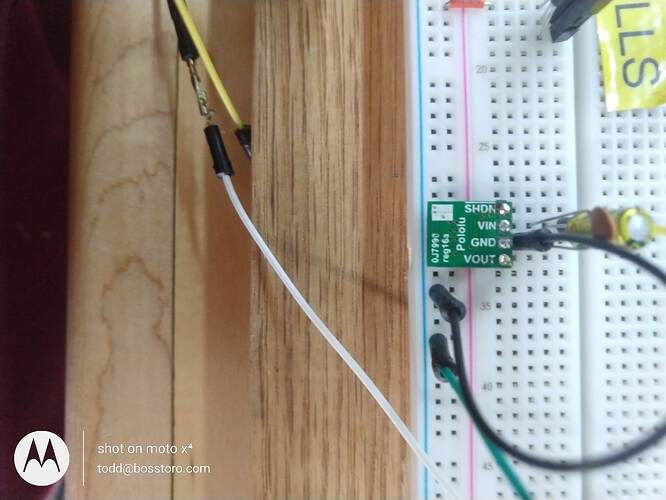Our prototype Electric Cylinder control system is using Pololus G2 18V25 Motor Driver and a D24V5F9 to power the microchip controller.
Bench results on the motor driver are good! We started in August 2020 using a 12VDC 10 Amp benchtop power supply in initial tests and the G2 was performing great! The D24V5F09 powered from the VM and GRD of the G2 is working, we measure 9.48VDC on Vout and GRD.
Our full load testing of our Electric Cylinder started Aug 12th. The test controllers, MicroChip, DFRobot Beetle controllers were not happy. MicroChip fails to power up and DF seems to forget the program after <10mins of operating?
On Aug 24 we installed a Arduino Pro Mini with a 100uF capacitor, and a ceramic 10pF on V out and Grd of the D24V5F9. No luck with the arduio pro mini controller. We trouble shot the soldering, the capacitors, the voltage,NO Luck!
We measure 9.48VDC on the Pro Mini Raw and GRD pins,but the DFRobot Pro Mini copy is NOT powering up? The VCC out and GRD voltage is .248VDC - so,we asked Jameco tech for help. They suggested checking the onboard voltage regulator,9.48V on pins Vin, Grd. The Vout and Vgrd only measure .249VDC? Jameco is mystified.
Replaced on board power regulator with a Ti 1117,same .247 Voltage out,so,we probably damaged it somehow? Nothing against DFRobot, Notthing against Jameco, we move ahead with orginal, COO Italy made Arduino Nano!
Sept 11, received 2 "Spanking Brand New COO Italy made Arduino Nano’s from Jameco,arrived and were installing them on the test breadboard.
Pics are our integration build using the Pro Mini. that we could NOT get to power up without a FTDI controller?
Thanks Pololu - Boss Toro C/O Todd C


